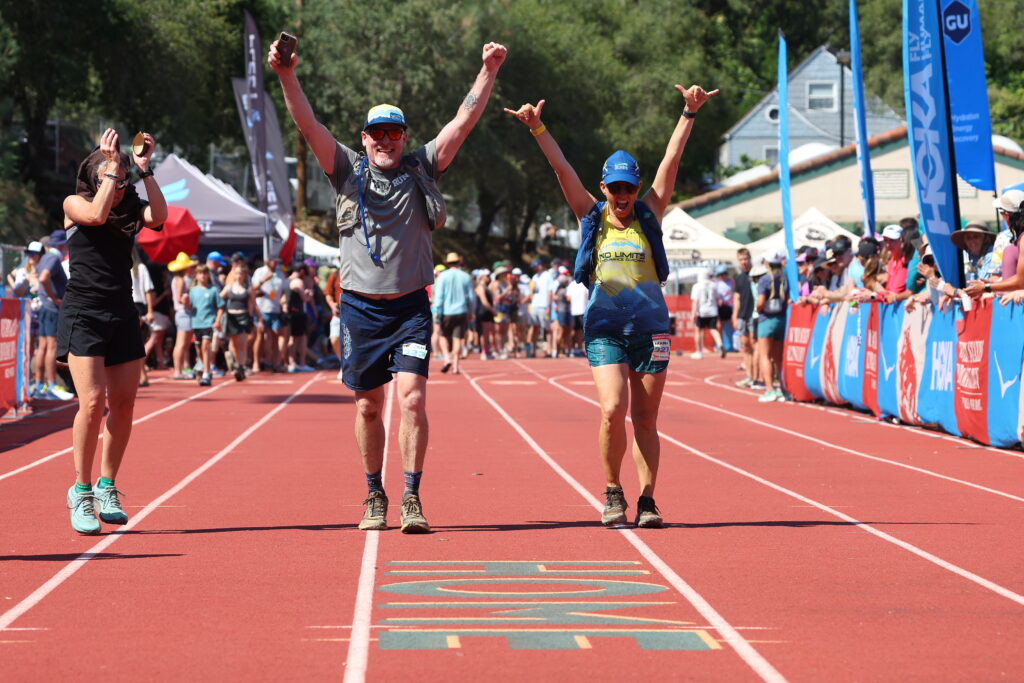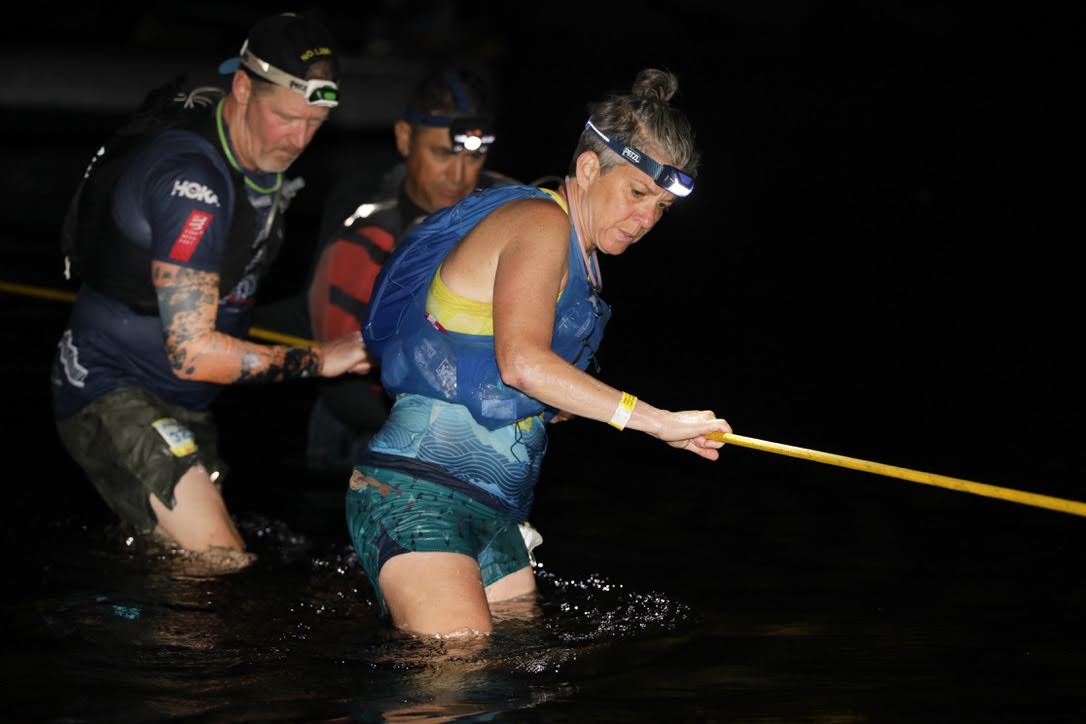Some goals don’t fit neatly inside a single day. They sprawl across years, tangling themselves into your life until you can’t separate who you are from the chase itself.
Western States 100 was that kind of goal for me. It wasn’t just a race I wanted to run. It was a ten-year thread stitched into every season, every long run, every moment of wondering if I still had what it would take.
I thought race day would be some sort of transformation — that something in the air at Olympic Valley would flip a switch and I would be different. But I should have known better. It’s never the day itself. It’s the years of showing up, the relentless striving, that do the changing.

Bringing a Decade To the WSER Start Line
When I stepped onto the starting line, I wasn’t just bringing fresh legs and a bib number — I was carrying the weight of a decade. The magnitude of that weight resulted in a mix of happy tears, mild fear, and a willingness to see what the day would bring.
At the top of the escarpment, a little over 3 miles into the race, the sun poured over Lake Tahoe, turning it into liquid gold. I smiled, remembering the 205 miles I once ran around that lake. That durability was in me, like a deep root system you can’t see but can always feel.

The high country felt like home. I run these types of trails all the time, and Leadville 100 taught me how to thrive at altitude. I left Robinson Flat knowing I could handle what came next.
Then the infamous Western States 100 canyons opened their furnace doors. Heat pressed in from every direction, the sun a merciless overseer. My desert training whispered in my ear: You’ve been here before. You didn’t die then. You won’t die now.
And in the steep and deep climbs and descents, I called on every 14er I’d ever summited. The rocks and grades prepared me well. Each step was a reminder: you’ve done harder things than this.

The Cutoff That Wasn’t
After the 45 minutes or so it took me to climb Devil’s Thumb, I hit the top feeling pretty dang good about what I had accomplished thus far. But then, a volunteer told me flatly, “You’re not going to make the cutoff.”
It was like hearing the voice of doubt itself — the one that comes with age, with slower splits, with the creeping fear that maybe your best days are behind you.
My watch said otherwise. My experience said otherwise. I put up my hand: “I’m good, dude. I don’t need your help.” I figured that was better than what I really want to tell that person. (To be clear: other than this one brief incident, every volunteer WAS GOLD.)
Another volunteer jumped in with encouragement, and the contrast between the two was not lost on me. Words can plant doubt, or they can water determination. I chose the one I would let grow in my mind.
Even still, at the next aid station, about 5 or 6 miles later, I sought confirmation with the crew there: “Of course you’ll make it! You’re an hour ahead of the cutoffs and moving strong!” Exactly the reminder I needed.

Experience Over Everything
Twenty years of ultrarunning makes my body a familiar language I can read fluently. I knew my margin for error was small, so I handled every minor issue before it became major.
I didn’t hit my “best” or “great” day goals. I only hit the last one: finish. Missing an outcome goal stings, but a DNF cuts deeper.
When a goal takes ten years, it’s hard to know what to do with yourself once you finally hold it in your hands. I joked after the race that I didn’t know who I was without the chase for the Western States 100 buckle. The joke continues to echo in my brain, with more than a tint of truth.
The hardest part of this race wasn’t the heat or the climbs — it was confronting the reality that I’ve slowed down. I’ve gotten older. My athletic identity has evolved. Yes, it’s normal. Yes, it happens to everyone. But until it happens to you, you don’t realize the bite it takes out of your brain, your soul, your heart.
Am I washed up? Is it worth setting competition goals anymore?

Choosing the Ledge
I’ve watched many of my athletes wrestle with these same questions — masters athletes feeling the drag of time and athletes with chronic illness or injury adjusting to new limits. Each one of them finds a way to keep going, to redefine progress, to seek the extraordinary in the endurance lifestyle. I’m lucky to have a career that shows me all the shades of human greatness.
Progress doesn’t always mean podiums or PRs. For me, it’s about walking out onto the ledge where you’re not sure if you’ll fall off. The discomfort. The suffering. The deep fatigue that makes every cell in my body scream: I’m here.
That is what living feels like.
Maybe I am running from something. Maybe toward something. Maybe in circles. But I know this: even as my body changes, I will keep seeking that ledge.

The Next Decade
Some goals take a day. Some take a decade. And some take a lifetime. All of them are worth it.
I don’t know my next start line yet. But I know there will be one. And when I get there, I’ll bring all of me — the slower legs, the sharper mind, the restless heart.
Because the transformation isn’t in the finish line. It’s in the years we spend getting there.




